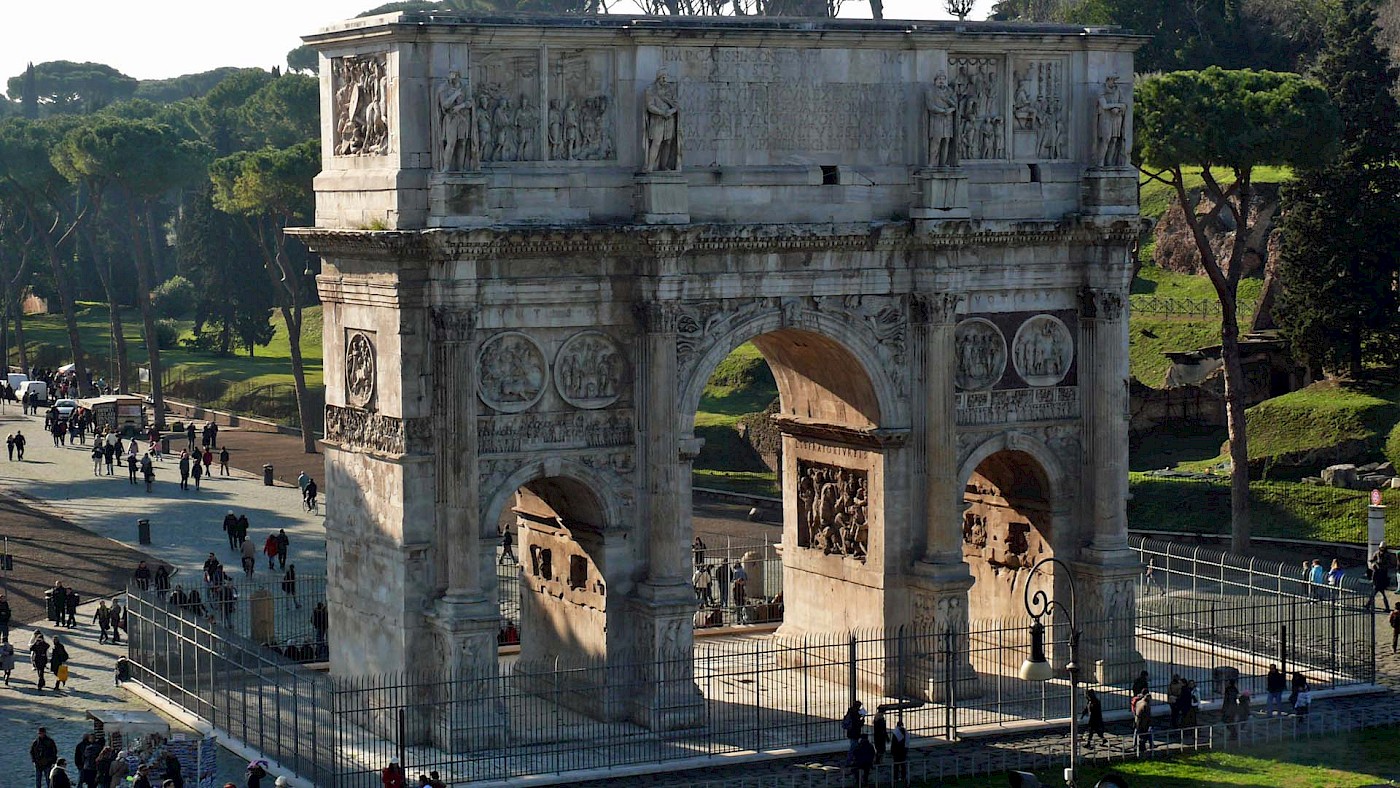In an earlier article, I referenced the Soldier Emperors of the third century AD and how, by AD 284, one man managed to return law and order to the Roman Empire. That man was Diocletian. He passed a number of important reforms, not the least of which saw imperial rule divided among four men, the so-called Tetrarchy.
But stability, at this point in time, was only fleeting. The ambitious leader Constantine (r. AD 306–337) sought to rule the Empire by himself. In AD 312 he defeated his fellow Tetrarch Maxentius at the Battle of the Milvian Bridge. Another colleague, Licinus, would retain control over the east until AD 324, after which Constantine was the sole ruler of the Roman Empire until his death in AD 337.
Famously, Constantine stopped the Roman persecution of Christians and legalized their faith in the Edict of Milan (AD 313). The fact that his mother Helena had been a Christian undoubtedly played a large part in his generally favourable disposition towards Christians. While his own religious convictions are a matter of debate, Constantine supposedly didn’t get baptized until right before his death (see, e.g., Eusebius, Vita Constantini).
The old and the new
What characterizes Constantine’s rule is a continuous negotiation of the old and the new, which we can clearly recognize in the religion (the pagan Roman beliefs versus the Christian faith), politics (the rule of a single monarchy versus the Tetrarchy), and art of this period. It’s the art that I want to focus on here, and in particular Constantine’s triumphal arch in Rome.
While Constantine had founded a new city for himself (Constantinople), Rome nevertheless remained important as the original city from which the rest of the empire had grown. The Arch of Constantine is located on the Forum Romanum, the heart of the city. The structure itself was newly constructed to celebrate the victory of Constantine over Maxentius. But look closer and you will realize that many of the details of the Arch are a hodge-podge of sculptural elements taken from older monuments.

A winged Victory, squeezed into a corner, is contemporary given some of the more rectangular features (sometimes referred to as “tetrarchic cubism”), but also betrays some classicising elements in the iconographic and the attempts at rendering a more flowing garment. A Dacian figure, perhaps a nobleman, perched on the attic of the Arch, is actually a statue of the early second century AD, made in the time of the emperor Trajan, who had famously campaigned in Dacia.

Likewise, contemporary reliefs depicting scenes that feature Constantine, executed in a typically blocky style, appear side by side with more naturalistically executed reliefs, roundels, and other elements that originally adorned monuments made in the times of the emperors Hadrian or Marcus Aurelius. In some instances, the heads of earlier emperors were recut to resemble Constantine features.
Appeals to greatness
Probably not coincidentally, the emphasis on the Arch is on re-using, or rather re-appropriating, art created in the age of the so-called Five Good Emperors of Rome: an imperial succession of Nerva (r. AD 96-98), Trajan (r. AD 98-117), Hadrian (r. AD 117-138), Antoninus Pius (r. 138-161), and finally Marcus Aurelius (r. AD 161-180). These five emperors are thought to have presided over the Empire when it was at its most powerful, even if cracks started to appear during the reign of Marcus Aurelius. (Note, however, that the notion of the Five Good Emperors first appears in the work of Niccolò Machiavelli.)
By taking statues and reliefs from monuments made to celebrate these earlier rulers, Constantine is effectively claiming to be a worthy heir to their legacy and the rightful caretaker of the Roman Empire, with the added suggestion that he has managed to restore the Empire to its former glory. His Arch, with contemporary reliefs that celebrate his beneficience, his generosity, and his triumphs, makes a forceful case that Constantine, too, deserves a place among the greatest of Roman rulers.
Considering that the emperor is generally referred to as Constantine the Great, one may safely say that he succeeded. On the cusp of the ancient world and the medieval one, Constantine effectively struck a balance between the old and the new, and in many ways paved the way for what would eventually turn into the modern world.
Further reading
There’s quite a lot of secondary literature on the art of the Late Roman Empire and Constantine in particular. Regarding the Arch of Constantine, there’s a good overview in Nancy H. Ramage and Andrew Ramage’s Roman Art: Romulus to Constantine (second edition, 1995), pp. 284 to 290. Also of interest is R. Ross Holloway’s Constantine and Rome (2004): a considerable part of the second chapter of that book is devoted to the Arch of Constantine.
Shortly before the First World War, there was considerable debate regarding whether or not the triumphal arch discussed in this article actually belonged to Constantine. If you want to read up on the discussion and enjoy going into minutiae, then check out Mark Wilson Jones’s article “Genesis and mimesis: the design of the Arch of Constantine in Rome”, published in the Journal of the Society of Architectural Historians 59.1 (2000), pp. 50-77. Jones’s final remark summarizes the point that I make in my own article: “History was compacted synchronically: the Arch of Constantine encapsulated old ways of design and heralded the new” (p. 72).
Finally, for a more strictly art-historical overview of the Arch of Constantine, including its importance for the history of art in Late Antiquity, consult Jaś Elsner’s “From the culture of spolia to the cult of relics: the Arch of Constantine and the genesis of Late Antique Forms”, in Papers of the British School at Rome 68 (2000), pp. 149-184. This article is available for download on the author’s Academia profile.
